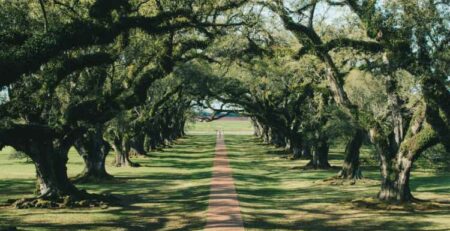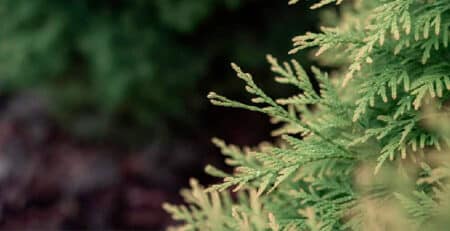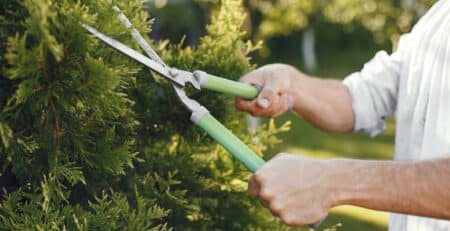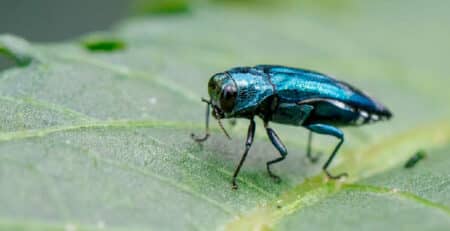How to Grow a Persimmon Tree from a Seed? Complete Guide.
Have you been wondering how to grow a Persimmon Tree from a seed? We can help! First, let us give a little background to this great little tree.
Persimmons are delicious-looking fruits that you can grow in your homestead. The fruits look like apples, and the trees don’t grow too tall. It is one of the fastest-growing homestead trees.
When they bloom, they create beautiful clusters of fruits. The ripe fruits are so inviting that they are simply irresistible.
The fruits can be astringent (almost bitter-like) or non-astringent. In non-ripe persimmons, the characteristic astringency is due to the presence of soluble tannins in the flesh of the fruit. As the fruit ripens and softens in some cultivars, the astringency disappears, and they become sweeter. Some cultivars will be non-astringent from the word go.
Both the hard and soft persimmon fruits taste great. You can eat them raw when they turn orange in colour. At first, they will be quite hard, but they will become softer over time. The skin is almost gel-like when they are soft, so it is possible to cut the fruits in half and scoop out the delicious flesh with a spoon as you do with passion fruit. You can buy persimmons at your local nursery ready to plant, or you can grow them from cuttings or seeds. Persimmons like very warm climates; however, they are tolerant of many other factors. The persimmon fruit is native to Japanese soil, and their colourful fruit offers a splash of bright colour in the winter landscape. Besides providing their beauty, the fruit provides 55% of the daily recommended value for vitamin A and 21% of vitamin C’s daily value.
 Understanding the Growth of the Persimmon Tree
Understanding the Growth of the Persimmon Tree
The reddish-brown to orange fruits that look like little Christmas ornaments on the tree are full of antioxidants, anti-bacterial, and anti-inflammatory, that’s great for your skin and mucous membranes. The health benefits of persimmon fruit are well known, including appearing to help limit cancer and weight loss. Due to their high fibre content, they are a perfect snack for those seeking to lose weight. The Japanese persimmon, or Hachiya, has a small, round fruit with a slightly pointed base. It is quite common in the United States, and it grows to 3 inches in diameter. The Hachiya has an orange colour with a dull pigmentation as it matures. The Hachiya’s quality is highly astringent, and it will pucker your mouth until the fruit has softened. When that time comes, the fruit is sweet and creamy.
The Fuyu persimmon comes in a smaller size and is apple-shaped. It does not vary in taste as the mature persimmons do not have tannins. They can be eaten while still firm and are delicious when fresh. Persimmon trees in the United States can bear fruit, but they are generally considered ornamentals. American trees require both a male and female tree to bear fruit, whereas Asian trees can produce fruit on their own. Asian persimmons yield plentiful crops and are profitable.
Persimmon Trees are Healthy Trees
The fruits are rich in both vitamin A and vitamin C. They also have great antioxidant, anti-inflammatory and anti-bacterial properties. Persimmons promote the healthy development of the skin and mucous membranes. They boost your immune system and offer protection from mouth and lung cancers. The fruits also have a high fibre content which can make them an excellent weight loss diet.
When they are astringent, you can easily use them to make vinegar. The sweet persimmons can also be used to make vinegar and even persimmon wines. In Japanese, the dried persimmons are known as Hoshigaki. They are delicious, too, and are made through an elaborate process into a dry sweet treat.
Apart from the delicious fruits, persimmons also make for great ornamental plants. Their aesthetic appeal is hard to match, particularly when they are fruiting. The fruits hang about like little colourful decorations on a Christmas tree.
 Varieties of Persimmon Trees You Can Grow in Canada and the United States
Varieties of Persimmon Trees You Can Grow in Canada and the United States
Understanding how to grow a persimmon tree from a seed can be greatly impacted by your location. The three most common varieties of persimmons grown in Canada and the United States are: –
- Hachiya or the Japanese Persimmon
- Fuyu Persimmons
- American Persimmons
Hachiya or Japanese Persimmons
The Japanese persimmon has a rounded shape and will grow to up to 3m in diameter. The colour is a bright orange which will grow duller as the fruit ripens. The Hachiya is very astringent and will pucker your mouth in the beginning. However, the astringent quality wanes as it soft-ripens, at which point, it will become creamier and sweeter.
Fuyu Persimmon
The Fuyu persimmon originates from China. It is smaller in size and is shaped like tomatoes. Unlike the Japanese persimmons, the Fuyu persimmons are not astringent as they do not contain any tannins. You can eat them when they are still very firm (when the astringency is most felt in other varieties), and they will have a crisp and sweet flavour.
American Persimmons
Unlike the Asian persimmons, which are grown for the fruit and for their ornamental value, the American persimmons are generally grown for their ornamental quality.
Also, while the Asian persimmons are self-fruiting, the American persimmons will need both a male and female tree to fruit. If you are looking to grow the persimmons for the fruits, you are better off with the Fuyu and Hachiya persimmons.
Growing Zones
The American persimmons are harder than the Japanese persimmons. The American persimmons do well in the USDA hardiness zones 4B to 9B. The persimmons are better suited for zones 7 to 9A.
 Considerations When Growing Persimmons from Seed
Considerations When Growing Persimmons from Seed
When learning how to grow a persimmon tree from a seed, it is usually through cultivars. When selecting cultivars, you can pick between the astringent and non-astringent ones. Non-astringent persimmon cultivars are gradually replacing astringent ones, but you can still find both for cultivation.
You can still grow persimmons from trees, but you have to consider that trees grown from seeds will not have the same quality and yields as those grown from cultivars. Trees grown from seeds are not as strong in their resistance to diseases and cold hardiness as those grown from cultivars. The fruit will still be delicious, but it may not be as abundant and healthy as those from persimmon trees that have been grown from cultivars.
Collecting the Persimmon Seeds
If you are wanting to know how to grow a persimmon tree from a seed, then it better be a good quality seed. The seeds should be bigger and well developed. They should also be fresh. These are the seed characteristics that will improve the chances that they will germinate.
The best time to collect the seeds that you will germinate is in autumn, when the persimmon fruits begin to soften. The seeds should be collected only from ripe and healthy persimmon fruits which do not have green skin, rotten spots or bird pecks.
Start by cutting the persimmon fruit open. Collect the few seeds inside the persimmon fruit and then soak these in warm water for a few days. This will loosen any sticky flesh that is still attached to the seed.
Lightly rub the persimmon seeds in running water to clean them off. You can use the seeds immediately, or you can store them in a cool and dry place for later use.
 Persimmon Seed Treatment
Persimmon Seed Treatment
To boost the germination process, you can put the persimmon seeds through a moist chilling process. This chilling process attempts to recreate the natural process of overwintering that seeds undergo outdoors. Cold stratification follows the process of cleaning and soaking the seeds. This period simulates the temperature needed for them to germinate. If you plan on storing your seeds for three to six months in the refrigerator, wrap the seeds in a moistened paper towel and wrap the paper towel in a glass jar. Spray the paper towel when it begins to dry out. Suppose you see the moist paper towel drying out before the “overwintering” is complete. In that case, you can sprinkle it with a little water that will help keep the persimmon seeds moist for the duration of the simulated overwintering.
Persimmon Seed Germination
Once they start germinating in the paper towels, the persimmon seeds will form a very long taproot early. To avoid inhibiting this growth and development, it is advisable to use tall plastic containers to germinate persimmon seeds early on. This process will allow the root to form uninhibited without cramping itself.
Create a sterile potting mixture and sow one germinating persimmon seed per pot. Ensure that the pot used has drainage holes at its base. The persimmon seeds should be planted at a depth of 2 inches. The pots should then be placed in a warm and well-lit location.
A tall container is needed for persimmons because their long taproot grows earlier compared to most other trees. The seed should be placed in a sunny location and should be about 70 degrees Fahrenheit. To ensure germination, it’s best to plant multiple seeds. Seedlings will appear in about six weeks. The persimmon seeds have a germination rate of 25-35%.
Caring for Persimmon Seedlings
Persimmon seedlings will thrive best where there are indirect sunlight and evenly moist soils. The seedlings should be kept outdoors in sheltered conditions during the spring months. You can then gradually expose them to stronger sunlight for one to two weeks. The persimmon seedlings should also be watered weekly but allow the soil’s top inch to dry out between the waterings. This will help keep the roots of the seedlings healthy. It would help if you moved your potted persimmons outside to a sheltered, but sunny spot after the danger of frost has passed. Harden them off gradually over two weeks by slowly moving them to areas with higher sunlight exposure. Let the top inch of soil dry out between waterings, but don’t water as often as weekly to prevent the soil from becoming soggy because persimmon loves a moist environment.
 Transplanting the Persimmon Tree
Transplanting the Persimmon Tree
This section is very important when learning how to grow a persimmon tree from a seed. The young persimmon seedlings will already have an extensive but fairly fragile taproot system when they begin germinating. When transplanting, take special care not to disturb the roots.
It would help if you also took special care to ensure that the seedlings’ roots do not dry out when you are transplanting from the pots to the orchard site. Container-grown persimmon seedlings usually see a smooth transition and do not suffer much-transplanting shock.
Because of their long taproots, plant the persimmon seedlings at the end of the first full growing season. We recommend that you plant them in autumn, right after the first rain.
Spacing for persimmon seedlings will depend on the following factors:-
- Soil type
- Tree canopy management
- The rootstock
- The type of persimmon tree
Fuyu persimmons, for example, require spacing of 5m by 3m or about 660 trees per hectare. As a general rule, the planting site should afford you at least 20 square feet of space for every persimmon tree. This will guarantee sufficient space to ensure a mature spread.
Upon completion of a growing season, the persimmon trees are ready to be transplanted into the homestead orchard. It is most comfortable for the trees to be transplanted in autumn after a good soak. Persimmon trees need at least 20 square feet of growing space to flourish and produce an abundant yield. Make sure you cover your persimmon tree roots with organic mulch and be patient. Persimmon trees from seed can take 3-5 years to bear fruit. It is worth it.
 Ideal Soil Type
Ideal Soil Type
While persimmons will grow in various soil types, they generally do very well in well-drained loamy soils with a good amount of organic matter. They do best on the alluvial river flats in which the persimmon trees will develop to an immense size. You can add green crop manure or well-composed animal waste over several months before you plant them. This substance will help boost the organic matter in the soil. Carry out soil analysis months in advance before you plant to ensure it has the right nutritional composition.
Avoid heavy loamy soils as these are prone to water-logging. The preferred soil PH should be in the range of 6.5 to 7.0. Before transplanting, carry out an early and adequate soil preparation as this will aid in the proper establishment of the persimmons. Unlike other deciduous trees, they will better tolerate damp soil conditions for a long time as long as there is sufficient drainage. Avoid seaside soils which have a very high saline content. After planting, spread organic mulch around the base of the persimmon plants to keep the soil moist. The trees will take anywhere between three and five years before they begin bearing fruits.
 Water Requirements for Persimmon Trees
Water Requirements for Persimmon Trees
When figuring out how to grow a persimmon tree from a seed, water is of extreme importance. Persimmon seedlings do not require too much water so avoid overwatering. However, the soil should be kept moist. Due to their long taproots, the seedlings are relatively drought-resistant once they are established. Water clogging is one of the leading causes of the death of persimmon plants. Although these trees will tolerate short periods of drought, they will bear larger, greater quality fruit when you water them regularly. Persimmon trees are sensitive to extreme drought, and they lose their leaves and fruits earlier than they would otherwise. Any fruit being left on the tree will likely become sunburned.
Aftercare
After they have grown to a certain height, you can train persimmon trees to modify the plants’ natural growth habits. This training not only improves the fruit quality but it will also make harvesting easier. Some of the training systems that you can use include palmette and the modified central leader.
Fruit thinning is also a critical aftercare measure, but it is an optional one. Your fruits will still do well without thinning, but it has some advantages that could enhance your yields. Evidence has shown that thinning results in bigger fruits and enhances the fruit colour. Fruit thinning can also help control certain insect pests such as mealybugs by ensuring less fruit crowding. However, due to the waxy leaves and tough outer fruit layer, many pests generally avoid persimmon trees.
When thinning is performed during the flowering stage, it will help minimize biennial bearing. If you perform thinning, leave at least two to four fruits for every bearing laterals of the persimmon tree.
Pruning
The young persimmon trees may require some light pruning while they are still dormant and during summer. The early light pruning will create the framework for your preferred tree training system. Summer pruning should be done only on mature trees. They help improve the plant in various ways. They improve the fruit size and colour while also thickening the laterals.
Pruning is only recommended if the plant is growing too vigorously. Some mature persimmon trees may require thinning out the weak shaded branches. Because the flower buds will emerge out of the current season’s growth, too much pruning of your persimmon trees may have the unintended consequences of cutting down on the crop load by encouraging strong vegetative growth. If the trees are heavily pruned, then no flower will develop, resulting in very low fruit yield. We partner with local arborists to offer tree trimming in the Kitchener and Cambridge areas.
Frequently Asked Questions About How to Grow a Persimmon Tree from a Seed

Is it true that a persimmon tree needs two trees to produce fruit?
There are various fruiting trees and shrubs in the family, including the persimmon, which provide an array of vibrant autumn colours in the garden and tasty fruit throughout the winter. It’s recommended to plant two trees for American persimmon produce, although an individual tree can produce fruit if there is enough space. Some alternatives exist if you have enough space.

What do grafting persimmons mean?
Grafting is a horticultural technique that infuses two plants (trees limbs) together. They will now appear to grow as a single unit as time goes on. For a persimmons tree, you can use a similar grafting technique as other fruit trees. Persimmons can be started from seed reasonably quickly, but your final tree may not match your expectations. You can develop your persimmon varieties by testing dozens of different seeds on your patch of land. Persimmon trees in your test strip do not have to be planted far apart since they only have to reach about five feet tall before they begin to produce fruit. Choose the varieties of your choice from this testbed and graft them onto seedlings that were started simultaneously and planted out in permanent locations.

How long does it take to grow a persimmon to grow from a seed to a tree?
The trees can take between 3 and 5 years to bear fruit when they are grown from the seeds.
Why are my persimmon tree leaves curling?
A heavily infested tree of the persimmon family can suffer from leaf damage from wilting, yellowing, or even complete defoliation caused by scale infestations. As a result of a hard scale and soft scale species, and as plant juices are fed onto by the scales and the soft scale species, leaves can curl or become blemished.

When is the best time to transplant a persimmon tree?
We recommend that tree plants be done at the beginning of the third growing season. To prepare the grounds, dig your spade a few inches into the land from the trunk of the tree. The second time around, cut into the rough spots that were left uncut the last time around. This process will have caused roots to develop close to the trunk, where you can dig them up.

What is causing my persimmon tree to die?
First, check to see if there are any infestations. However, it is true that over-watering your trees can cause them to die, but when you don’t use enough water, you can also make them die. Persimmon trees are drought-resistant, but they can die from extreme drought.

How long does it take persimmon trees to bear fruit?
Fruiting and blossoming occur on alternate years on American persimmons and oriental persimmons. Grafted trees bloom after two to three years. Persimmons take several years to flower and still do not bear fruit for up to ten years.

Do you have any growing tips for the persimmon tree?
Consider fertilizing properly. Most plants need a balanced fertilizer once a year or every few years, depending on your area’s soil. If they don’t need that much moisture naturally, give them one inch of water per week. Mulch the site to help the ground retain moisture to promote your persimmon tree growth.

What causes the persimmons to have black spots?
As persimmons mature, they eventually lose their hardness and become less astringent; however, as they become riper, they will gain flavour. Don’t be too concerned about the black spots on the fruit. They disappear once it becomes soft and ripe.

When are persimmons ripe for harvest?
In contrast to most fruit, persimmons ripen during the fall, mainly from September to the beginning of the following season. There are two varieties of persimmons. Astringent fruits are eaten when they are soft, while non-astringent fruit, which is becoming increasingly popular, is eaten while it is still firm. In the United States, firm fruit suits the palate, so the Fuyu persimmon is a very popular choice. Persimmons have a good source of vitamin A, vitamin C, as well as potassium, fibre and magnesium.
Good Luck with Growing Your Persimmon Tree
Hopefully, this guide on how to grow a persimmon tree from a seed has been helpful for you. We wish you all the best!







